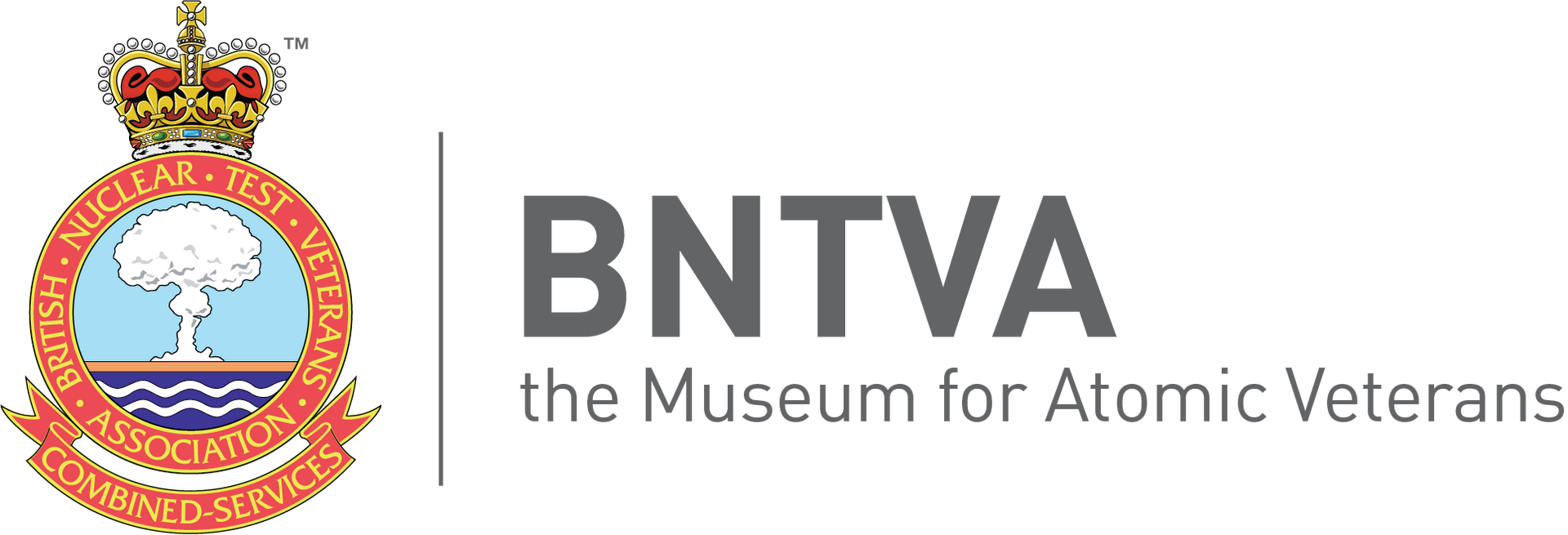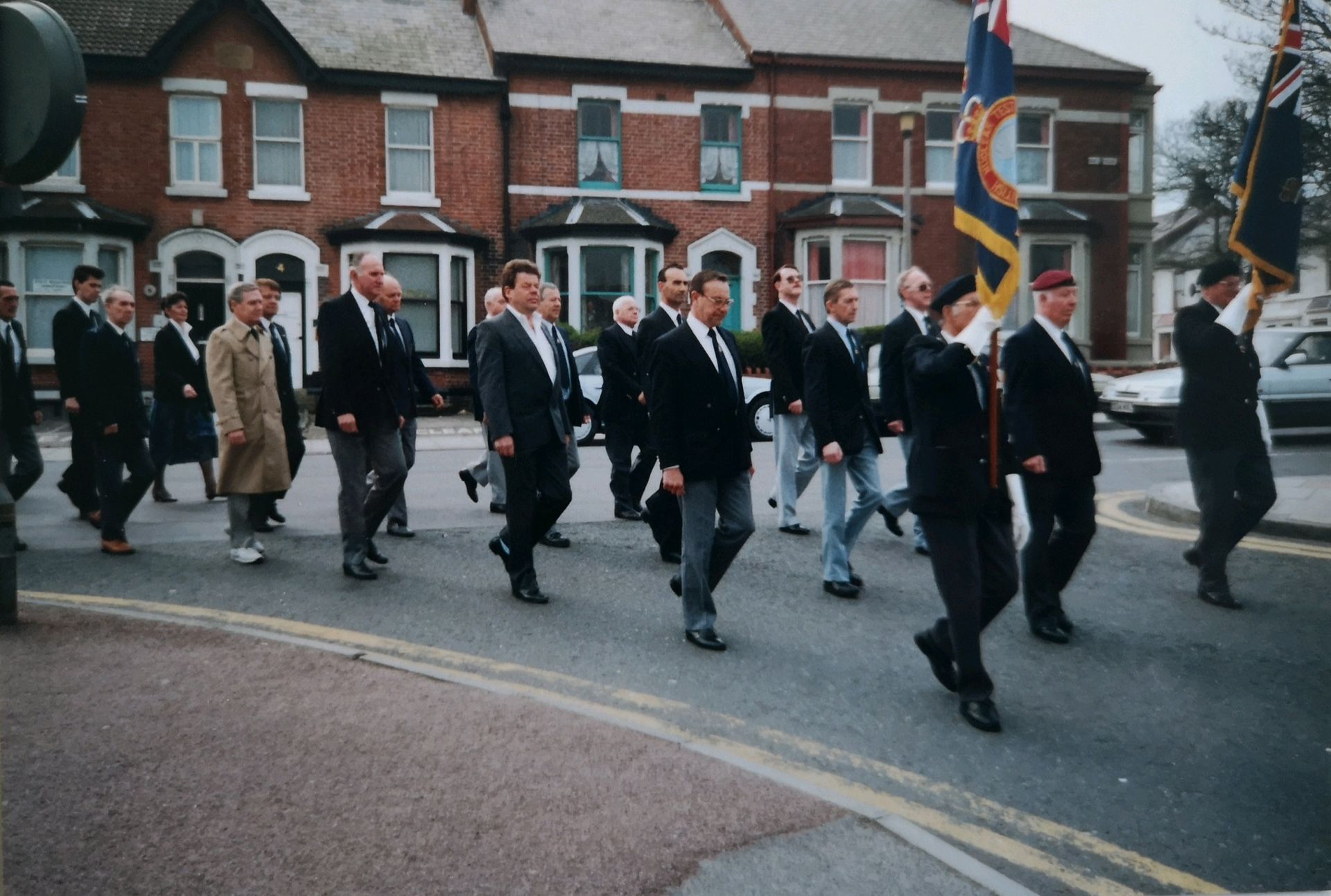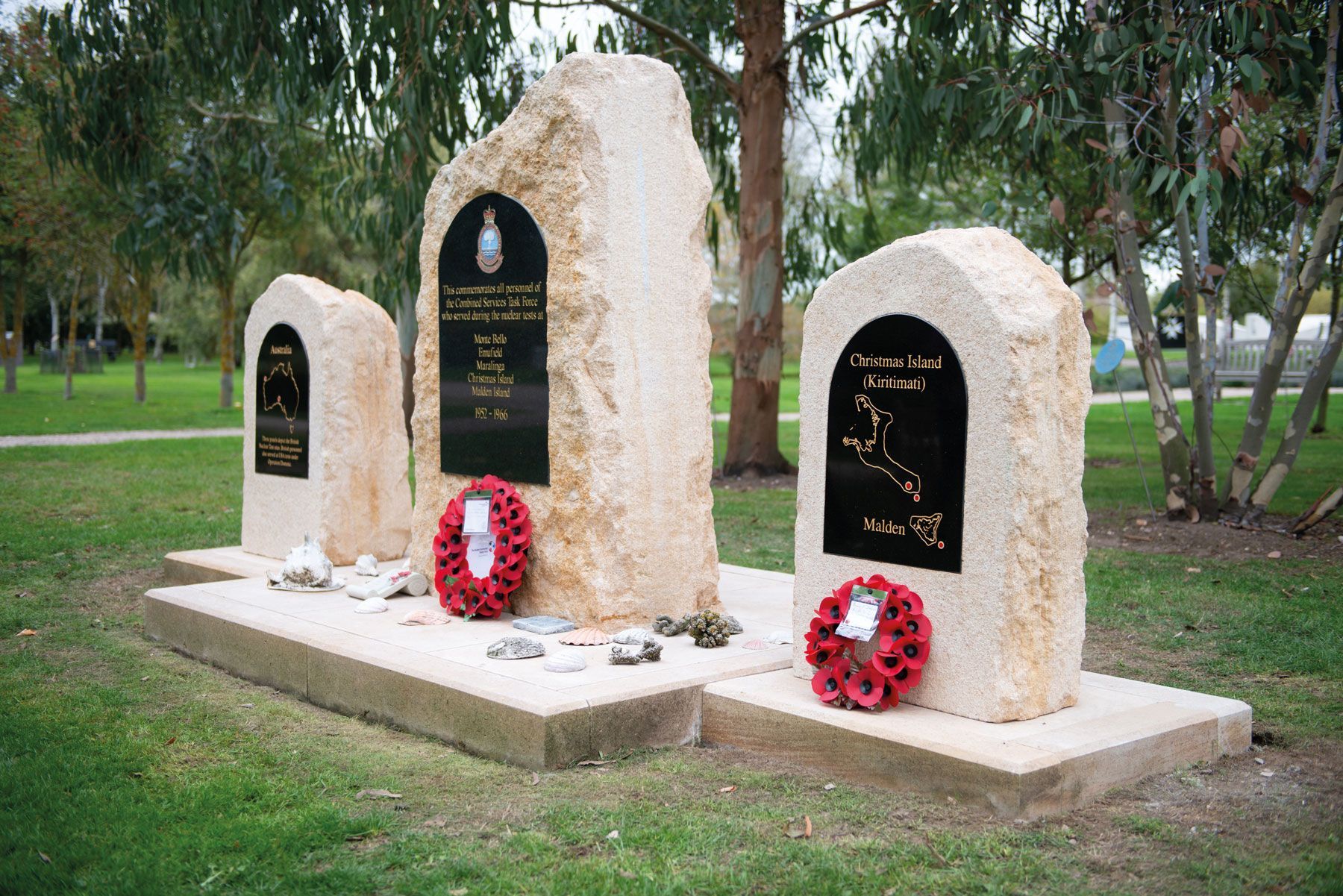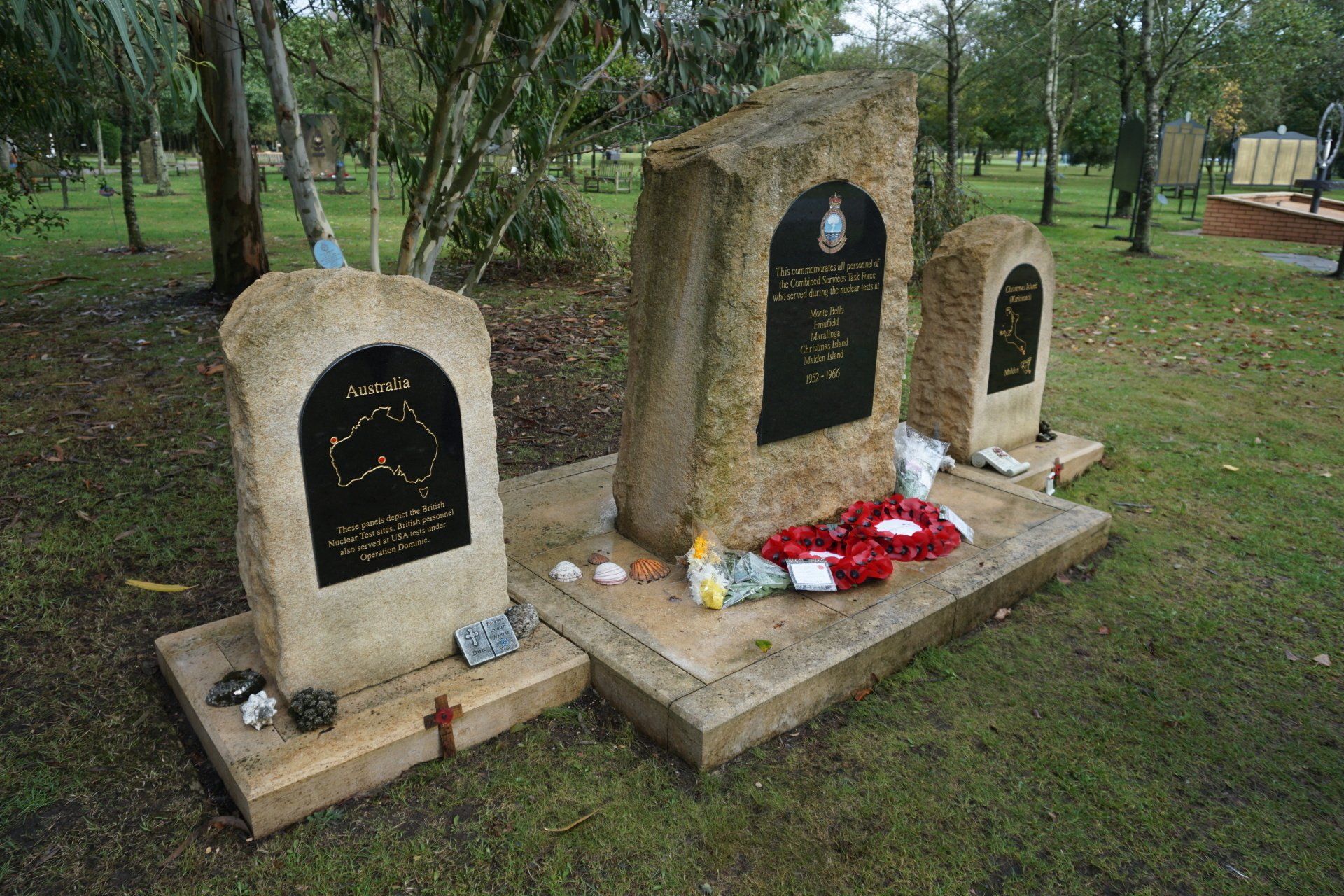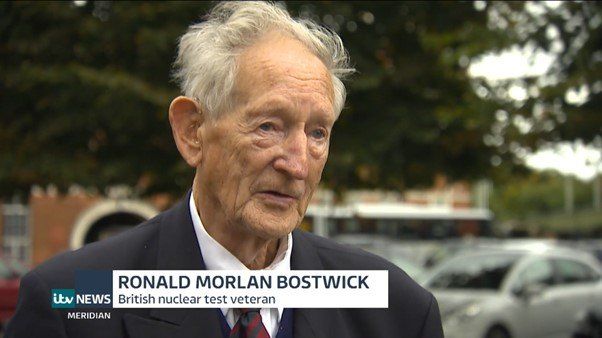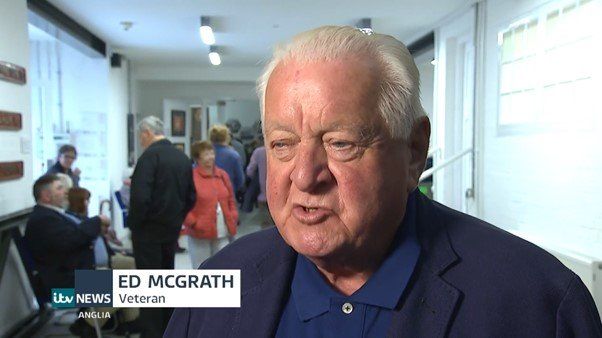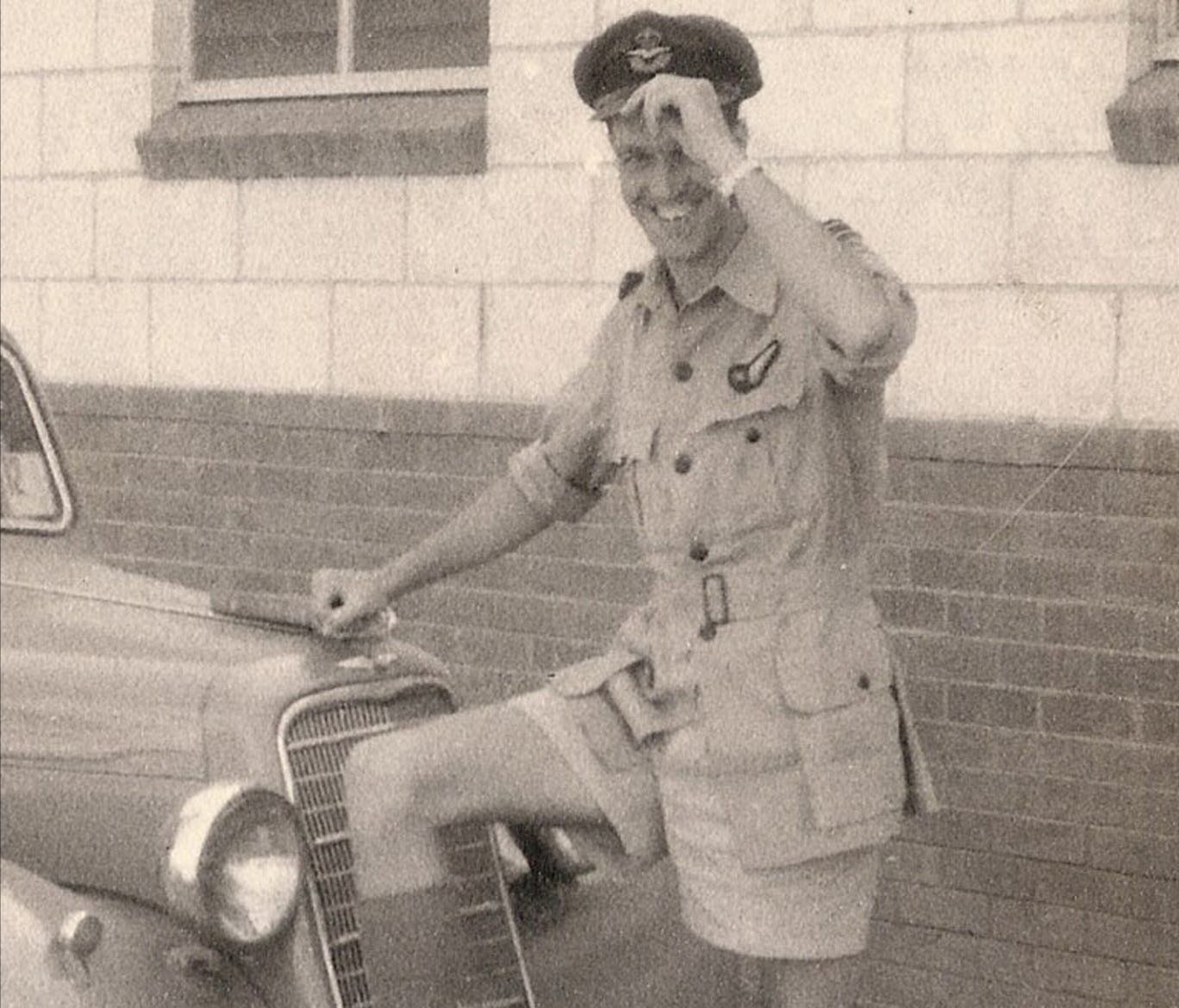Britain’s Nuclear Deterrent Development – Part One
(Sir Ernest Rutherford's laboratory)
The BNTVA would like to thank the Vulcan to the Sky Trust, www.vulcantothesky.org, for kind permission in allowing us to publish the "Nuclear Deterrent" series.
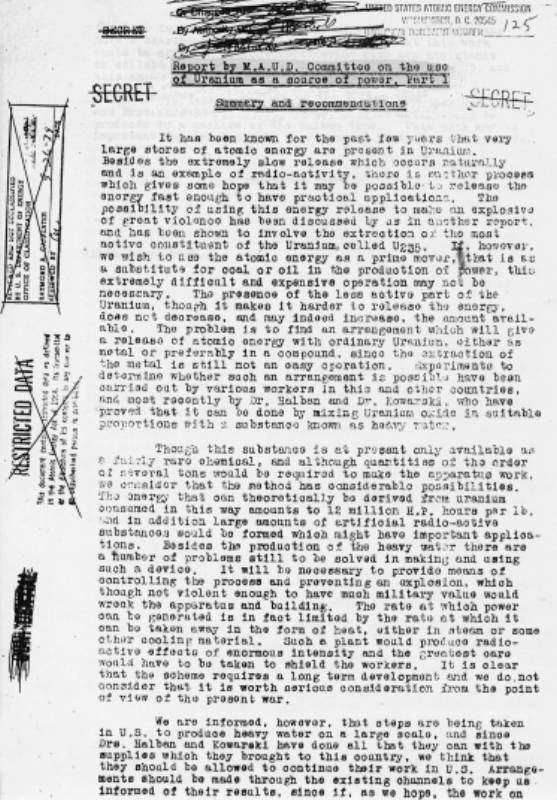
(MAUD Committee Report | Atomic Heritage Foundation)
The discovery of the neutron and its properties is central to the extraordinary developments that lead to the first atomic bomb in 1945, and the subsequent years of nuclear deterrent.
Britain could be considered the birthplace of atomic vision and scientific research. One of the first steps toward the advancement of atomic energy was the research of Ernest Rutherford, a New Zealand-born British physicist and recipient of the 1908 Nobel Prize in Chemistry “for his investigations into the disintegration of the elements, and the chemistry of radioactive substances”.
In 1917, Rutherford performed the first artificially induced nuclear reaction in experiments where nitrogen nuclei were bombarded with alpha particles. As a result, he discovered the emission of a subatomic particle, which he named the proton. Rutherford became Director of the Cavendish Laboratory at the University of Cambridge in 1919. Rutherford became known as the father of nuclear physics.
Rutherford’s work would influence other nuclear physicists. Many of who would go on to work on the British atomic project named Tube Alloys, and the American Manhattan Project. These physicists included James Chadwick, Niels Bohr, and Mark Oliphant.
Neutrons were discovered by Rutherford’s colleague and former student James Chadwick in 1932, at the Cavendish University in Cambridge. Chadwick, unconvinced by other models and interpretations of the atom, performed a series of experiments that lead to the discovery of the neutron.
The year 1932 was later referred to as the “annus mirabilis” – “wonderful year” – for nuclear physics in the Cavendish Laboratory, with discoveries of the neutron, artificial nuclear disintegration by the Cockcroft–Walton particle accelerator, and the positron.
For his discovery of the neutron, James Chadwick was awarded the Hughes Medal by the Royal Society in 1932, the Nobel Prize in Physics in 1935, the Copley Medal in 1950 and the Franklin Medal in 1951.
The possibility of a nuclear weapon was acknowledged early in the Second World War. Alarmed by Hitler’s mention of a “secret weapon”, the British government began taking the bomb project much more seriously. Mark Oliphant reorganized research at Birmingham University, where he would bring together Otto Frisch and Rudolf Peierls. The two physicists were refugees from Nazi Germany working at the University. In 1940 they wrote the Frisch-Peierls memorandum. It was the first technical expression of a practical nuclear weapon. The importance of the Frisch-Peierls memorandum was recognised and led to the rapid formation of the MAUD Committee.
Robert Pleming notes:
“Professor Sir Rudolf Peierls was a frequent visitor to the Department of Nuclear Physics at Oxford whilst I was studying there for my doctorate in the mid-1970s. I remember being rather in awe of him.”
10 April 1940 – The MAUD Committee held its first meeting. The committee was a scientific working group that was established to perform research into the feasibility of an atomic bomb. They were to consider how to harness nuclear energy for weapons use and how to separate uranium-235 from natural uranium for use in a weapon. They proceeded in absolute secrecy. Despite their early contributions, Frisch and Peierls were not allowed to participate in the MAUD Committee. Only British-born scientists were considered. At a time of war, it was considered a security threat to have enemy aliens in charge of a sensitive project. In September 1940, a Technical Sub-Committee was formed, with Peierls and Frisch being allowed as members.
The chairman of the MAUD Committee was George Paget Thomson. The other original members were James Chadwick, John Cockcroft, Mark Oliphant and Philip Moon. At first the committee was named after its chairman and was called the Thomson Committee. This was soon changed for a more unassuming name, the MAUD Committee.
The name MAUD stems from a simple misunderstanding. Early in the war, while Niels Bohr, a Danish physicist who made foundational contributions to understanding atomic structure and quantum theory, was still trapped in German-occupied Denmark, he sent a telegram to his old colleague Otto Robert Frisch. Bohr ended the telegram with instructions to pass his words along to “Cockroft and Maud Ray Kent.” This was mistakenly thought to be a cryptic reference for something atomic. One suggestion was to replace the “y” in “Maud Ray Kent” with an “i”, producing ‘radium taken’. MAUD was chosen as a codename for the committee. When Bohr returned to England in 1943, it was discovered that the message was addressed to John Cockroft and Bohr’s housekeeper Maud Ray, who was from Kent.
Research by the working group was split among four different universities – the University of Birmingham, University of Liverpool, University of Cambridge and the University of Oxford. Various means of uranium enrichment were examined, as was nuclear reactor design, the properties of uranium-235, the use of the then-hypothetical element plutonium, and theoretical aspects of nuclear weapon design.
July 1940 – Britain offered to give the United States access to its scientific research. At the time, the American project was smaller than the British, and not as far advanced.
July 1941 – After 15 months of work, the research culminated in two reports, “Use of Uranium for a Bomb” and “Use of Uranium as a Source of Power” – known collectively as the MAUD Report. The final draft of the report was written by James Chadwick, and it concluded and recommended:
- The committee considers that the scheme for a uranium bomb is practicable and likely to lead to decisive results in the war.
- It recommends that this work be continued on the highest priority and on the increasing scale necessary to obtain the weapon in the shortest possible time.
- That the present collaboration with America should be continued and extended especially in the region of experimental work.
In response to the report, Prime Minister Winston Churchill made the decision that the bomb project should proceed before the official recommendations reached him. It was recognised that the project had to be set up on a more formal basis, and the Directorate of Tube Alloys, a title chosen as a cover name, was formed. Britain was beginning work on developing an atomic bomb – the first nation in the world to do so.
America had been in touch with the MAUD Committee since 1940. As part of the scientific exchange, the MAUD Report was made available to the United States. At the time there was still little urgency in the US nuclear project. Britain was at war with Hitler and the Nazis, and felt an atomic bomb was urgent and could win the war, but the US was not yet engaged in World War II. When America eventually took note of the contents of the report, it energised their efforts on their project.
On 9 October 1941, President Roosevelt approved the atomic program. He also agreed to coordinate the effort with the British project. On 11 October Roosevelt sent a message to Churchill, suggesting that they correspond on atomic matters. The MAUD Report helped to jump-start the American project. Without the help of the MAUD Committee the Manhattan Project would have started months behind. Instead they were able to begin thinking about how to create a bomb, not whether it was possible.
The MAUD Report was handed over to the Soviet Union by its atomic spies. It helped start the Soviet atomic bomb project. Any one of a number of spies could have handed over the critical information; Klaus Fuchs, a German theoretical physicist, was an assistant to Rudolf Peierls working on Tube Alloys and later went on to work on the Manhattan Project in the US; Alan Nunn May, a British physicist and Soviet spy, part of the Tube Alloys team that was merged into the American Manhattan Project; Melita Norwood, a British civil servant allegedly recruited by the KGB, was secretary to a head of department with access to Tube Alloys files. In a book titled The Mitrokhin Archive: The K.G.B. in Europe and the West, she is described as “both the most important British female agent in KGB history and the longest serving of all Soviet spies in Britain”.
Who knows how many more atomic spies there may have been in these years that led to an era of Cold War espionage!



